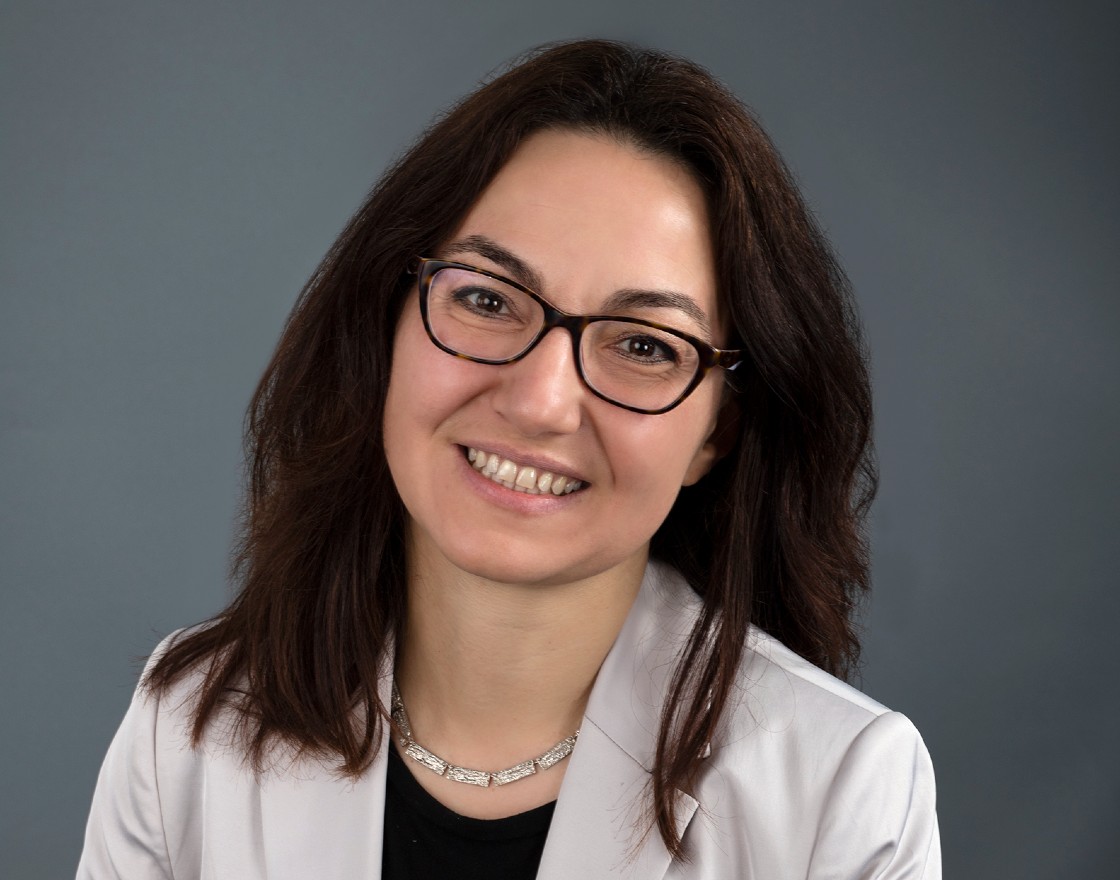Tydzień w gospodarce
Category: Trendy gospodarcze

Gallina Vincelette (©World Bank)
Obserwator Finansowy: The last two decades were a time of rapid economic convergence as Central and Eastern Europe were catching up with the West. Should we expect that convergence will continue in the post-pandemic word?
Gallina A. Vincelette: The convergence question is a challenging one. When we take country-level parameters and income per capita and compare them to the European Union (EU) average, it is clear that in 2020 the pandemic interrupted the income convergence dynamics among the EU Member States.
However, many countries, especially those with lower income levels, including the countries from Central and Eastern Europe, have been growing faster than Western Europe economies in 2021. This year many of them are expected to recover their lost output and even return to the path of convergence.
And how can this recovery be jeopardized?
In the first place, short-term risks must be identified and mitigated. Those risks include, primarily, the progress in increasing the COVID-19 vaccination coverage, the future course of the pandemic and, potentially, any new virus strains. Inflation has to be watched closely, especially given the jump in the producer price index, energy and housing prices and even food prices- and the tightening of monetary policy in some EU member states. In the months ahead, it is important to keep track also of any demand pressure coming from the tight labor market and the pace of consumption growth, which has been fueling growth to date. In the medium to long term, risks from the financial sector, high levels of government indebtedness, and growth trade-offs from fiscal tightening need to be monitored. In addition, the slowing of productivity prior to the pandemic and other challenges to growth, such as demographic decline, remain.
The World Bank has recently presented the new economic outlook. Compared to WB June projections, GDP growth figures for Central Europe and Poland are higher for 2021 and 2022, but lower for 2023. Why is that?
In the current circumstances, when the main economic trends are heavily dependent on external factors, such as the pandemic, for example, any forecast is highly uncertain. The reason our expectations for the nearest quarters have been raised is the fact that the Polish stimulus package, including through the policy of the National Bank of Poland, has been strong enough to supply the economy with the stream of funding and, concurrently, to safeguard employment and protect incomes. Yet, risks to the outlook are there and need to be managed. We project a growth rate of the economy in 2022 of 4.7 and 3.4 in 2023. It must be remembered that all those projections are based on assumptions that Poland will benefit from strong investment.
The headlines usually highlight the key indicators, such as the GDP or inflation rate, but the projections include many other interesting details. What should we pay particular attention to in this round of projections?
In our economic outlook reports, on top of the main macroeconomic indicators and their analysis, we traditionally take one aspect of economic development and put it in focus. This fall we chose to zoom in on enterprise competitiveness and productivity. Although the COVID-19 crisis has had a devastating impact on many firms, it also triggered a reallocation of resources from less productive firms to more productive ones, especially in economies with highly competitive markets. Firms with high labor productivity prior to the crisis saw smaller drops in sales and employment than those with low pre-crisis labor productivity, and more productive firms were also more likely to increase online activity and use remote work. According to the findings from our research done during the pandemic, companies that invested in digitization have weathered this storm much better. Potential benefits from the uptake of digital solutions can be a driver of growth in Poland, which is at the tail end of business digitization in the European Union. Moreover, more than half of Polish enterprises declare that such new tools are not on their must-have or good-to-have lists. Clearly, there is still room for building awareness of the potential benefits digital tools can bring, especially among micro-enterprises.
Going back to the theme of convergence, is this a long-term process? What are the risks we should be wary of in the longer perspective?
There are two aspects to convergence – between countries and within countries. The pandemic interrupted the convergence process between countries but the rebound in 2021 will help countries to restart the process. The within country convergence has also likely been adversely impacted by the pandemic. Although COVID-19 has affected all population segments, we’ve seen that vulnerable populations have been disproportionately impacted, likely increasing inequalities and regional divergences. Concerted efforts will be needed to protect vulnerable populations and to rekindle the within country convergence momentum and EU funds will be instrumental – for both between and within country convergence.
On the risks, it will be important to rebuild macroeconomic buffers which were depleted during the pandemic to enable countries to better absorb shocks, internal or external. The green and digital transitions also need to be carefully managed so that they do not increase inequalities and fuel widening divergences in income per capita. The digital transition could potentially increase regional divergence if growth and opportunities are concentrated in cities and if broadband connectivity is lacking outside large cities. Hence, policies will be needed to ensure a transition which supports inclusion. Indeed, convergence is a long-term process and requires reform continuity.
Taking Central and Eastern Europe as one, it has been getting close to the EU average, but this process is not homogenous throughout the region, is it?
The last 20-30 years have been marked by significant progress in income convergence among EU Member States and Central and Eastern European countries have been on the forefront of this process. During this time, in terms of GDP per capita, some of the countries advanced from the level of about 30-40 percent to over 70 percent of EU average. But there have been significant differences between countries, with some making more progress than others.
The rich regions have gotten richer and the poor ones poorer, in relative terms.
Meanwhile, taking a closer look at the regions, we can see the opposite trend. There has been increasing divergence on the urban-rural dimensions. The rich regions have gotten richer and the poor ones poorer, in relative terms. This is a trend also found in other parts of Europe, not just the central and eastern regions.
This is where public policy should step in to ensure equitable access to public services so that no community or region is left behind and everyone enjoys equal opportunities.
This seems like a daunting task: to finance economic transition in view of the looming climatic disaster, to power the right engines for economic growth and, at the same time, to make sure that the resulting prosperity is shared on a more equitable basis.
Indeed, equitable growth is no simple matter. There are reasons why – taking Poland, for example – Warsaw will always generate wealth faster than some of the regions, due to various demographic and structural factors. Twenty years ago, the inter-regional intra-national income disparity had a 1.5 or 2 factor. Today, in some countries this factor is 4 or 5. This must be put on the agenda by making sure, for example, that quality public services are delivered also in most remote areas and that the vulnerable or socially excluded members of the population are not left behind.
Let me make it clear, however, that what these people need most are meaningful opportunities for development; the matter won’t be resolved by fiscal transfers alone.
The green transition is likely to have macroeconomic implications including the reallocation of capital and labor (with frictions in these markets raising transaction costs), potential shift from a consumption- to investment-led growth, increase in public debt levels (fueled by higher investment), accelerated obsolescence and its impact on potential growth, and effects on financial assets. What will be important is to ensure that this transition is just, implying that communities that are adversely impacted are supported through fiscal and non-fiscal measures like training/reskilling and active labor market policies.
As for the green transition, it is much more than a change of technology. This ambitious project has a price tag which carries not only financial, but also social cost. What if the green transition is set back by the rising energy prices?
The very concept of the system of greenhouse gas emission rights is based on the use of price incentives. By raising the price of emissions, we are discouraging the use of ‘dirty’ technologies. But the key part of the equation is to make alternative energy sources available and affordable, to encourage producers and consumers to use cleaner technologies.
Policies that raise the price of emissions through price incentives must also consider a comprehensive package of solutions that reduce the potential of rising energy poverty.
This is critical from the standpoint of ensuring this is a transition that brings everyone along and includes poorer segments of society. From this perspective, policies that raise the price of emissions through price incentives must also consider a comprehensive package of solutions that reduce the potential of rising energy poverty, from financial support for poorer households to invest in cleaner technologies and thermally insulating buildings to ensuring that social assistance support can help those in need to pay their energy bills.
We cannot lose sight of forward-looking goals. There may be temporary deviations from the trend, but the government policy and public interventions on this market must be built on the premise that these goals are pursued by the households, enterprises and all other economic actors. We are hopeful that the rising energy prices will not set back the green transition. If anything, they are a pointer to the fact that a lot more needs to be done to facilitate the green transition.
How does the World Bank help governments implement such policy?
In the European Union, we collaborate with governments on three main objectives.
First, we support countries in the process of green transition. Second, we strive to make sure that development is inclusive, without leaving any members of the society, business entities or regions behind. And third, we support capacity building in the institutions responsible for income convergence. All these forces bring us closer to the European goals of convergence and coherence.
Gallina A. Vincelette is the World Bank’s Country Director for the European Union (EU), based in Brussels, Belgium. She is responsible for guiding the Bank’s operational and knowledge engagement with client countries and the EU institutions.

